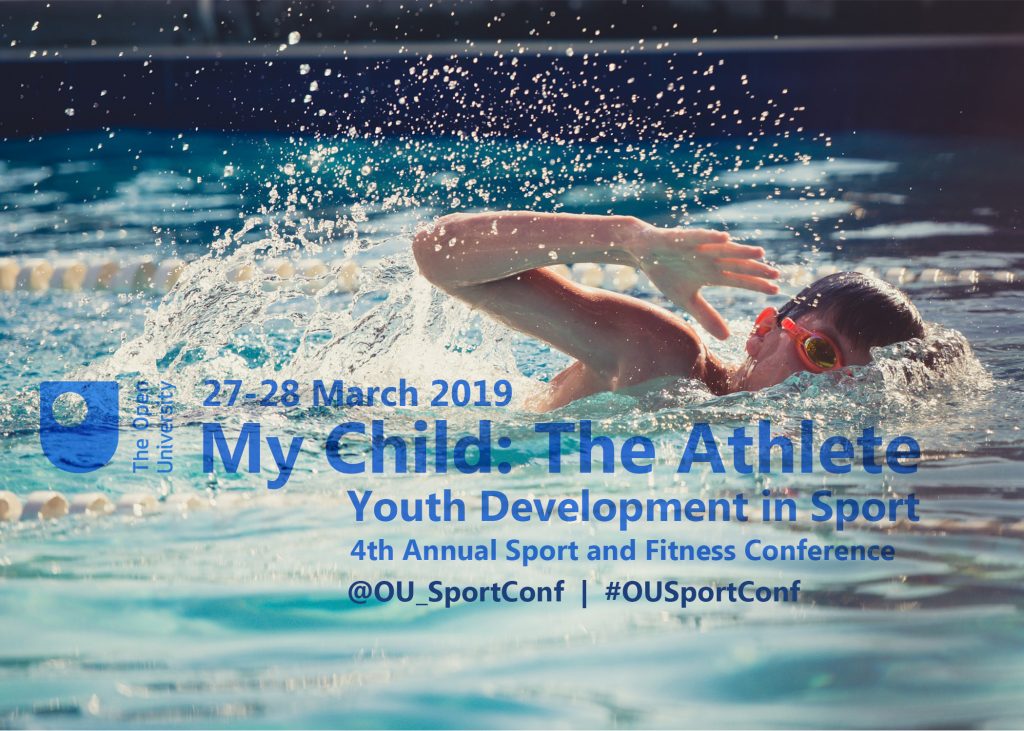“The road south is awful. Choppy, narrow, bumpy concrete with a bad head wind, going into the sun and big semis going the other way. These roller-coaster hills speed them up on the downside and slow them up on the upside and prevent our seeing very far ahead, making passing nerve-wracking. The first one gave me a scare because I wasn’t ready for it. Now I hold tight and brace for them. No danger. Just a shock wave that hits you” (Pirsig, 1974)

Sport participants who engage in extreme activities (e.g., motorcycling, rock climbing, sky diving) often face intense fears where there can be high risks involved which could be experienced as stressful*. Whether an individual perceives an experience as negative stress is assessed by our bodies based on sensory input and stored memories (Vaughn et al., 2021). According to Herman et al. (2016), numerous factors can determine an individual’s response to acute or chronic stress, for example, genetics, early life experience, environmental conditions, sex, and age. Indeed, stress may not necessarily be negative, and the term eustress represents the positive side of stress (Quick et al., 2004). The feeling of eustress is akin to ‘runner’s high’ or being ‘in the zone’ whereby time feels suspended, and an individual is fully absorbed in the task (Quick et al., 2004). Motorcyclists are often faced with moments of acute stress which requires the rider to “anticipate be cool under pressure be attuned to a constantly moving environment at speed, and position the body-motorcycle” (Owton, 2021, p.160). Motorcycling, like other extreme activities, enhances sensory processing, increases focus and visual attention which can increase epinephrine levels, increase heart rate, and decrease cortisol levels. This demonstrates that extreme activities can replicate the results associated with exercise and the reduction of stress levels (Vaughn et al., 2021). Nonetheless, there may be times when an individual is faced with something sudden, intense, and unexpected where the body-self has to respond to a threat to life.
Startle Effect
The concept of startle effect has been drawn upon in aviation to describe a stress response to a sudden, intense, and unexpected stimulus; an intense event violates an individual’s expectations where they are thrown towards a threat to survival. The startle reflex is an uncontrollable and automatic response to a sudden, intense stimulus (Field et al., 2015). In order to respond to the threat, there is an emotional component (Lang et al., 1990) and an involuntary physiological reflex (e.g., muscular tension, increased heart rate (Field et al., 2015; Koch, 1999).
“I lean in slightly as I swing round the next corner and am suddenly faced with a van speeding straight towards me on the same side of the road. “Oh s***!” I yell. For a split second, I stare at the van and stop breathing trying to judge the situation as quickly as possible. Instinct makes me release my grip on the throttle which starts slowing me down, then I grab the hand brake and step on the foot brake. I scan the road as swiftly as I can, judging whether the van will pass the car in time for me as I continue to slow down. The van swerves back across the road passing the car and passing me safely on the other side. As the van passes me, I breathe again “f***ing hell!” I mutter cursing under my breath and gently squeeze the throttle to speed up again. I feel my eyes have widened with the suddenness of hot fear that’s trickled through me and the immediacy of surprise and startle that I’ve just been faced with. By the time I’ve arrived home, I’ve recovered from the event, but the embodied memory remains in my sweaty body” (Owton, in press).
Feeling startled evokes an immediacy of attentional focus (cognitive) and actions (physiological) needed towards the task of surviving. Signals sent to the amygdala may induce a startle reflex, while these same signals will be sent to the sensory cortex for cognitive processing (Martin et al., 2016). During a threatening situation, part of the stimuli goes directly to the amygdala “emotional/irrational brain” while simultaneously the other parts are sent to the neocortex “thinking/rational brain” (Goleman, 1996). This can lead to a potential battle between the “rational” part of the brain and the “irrational” part of the brain which could freeze the body into inaction (LeDoux, 1994; 1995). The amygdala, however, can process the information milliseconds quicker than the neocortex which could be why someone might act irrationally and destructively before processing the threat appropriately (LeDoux, 1994; 1995).
“Amygdala Hijack”
The amygdala is central to the startle response; a structure in the limbic system that is related to survival and our emotions (Goleman, 1996). Also, it is responsible for processing emotions such as fear, pleasure, and anger. An amygdala hijack, exhibits three signs:
- Strong emotional reaction
- Sudden onset
- Post-episode realisation if the reaction was inappropriate (Goleman, 1996).
The thalamus can bypass the cortex which means that emotional reactions and responses can be formed without any conscious or cognitive participation with the amygdala acting completely independently of the neocortex (Goleman, 1996). Something like ‘corner rush’ that motorcyclists experience can elicit a startle response. In the following example, I know the corner is coming, but the speed at which I reach the corner startles me:
“On about lap 5, I’m speeding down the straight and lose focus for a second, I experience ‘corner rush’ and quickly brake as I feel the motorcycle wobble erratically before turning into the bend; I stare at the grass ahead but force myself to release the brake and throw it in, saving it – just a few breathless moments” (Owton, 2021, p.159).
The startle reflex can be accompanied with feelings of surprise, however, the startle reflex can be triggered without the notion of surprise (Ekman et al., 1985). A runner, for example, may know the bang of a gun is going to sound, but the runner will usually still have a ‘startle reflex’ resulting from the gun sound. Muscular activity can be inhibited by startle and a person may stop what they were doing, e.g., freeze (Koch, 1999). This disruption can last from 100ms to 3 second for basic tasks and up to 10 seconds for more complex motor tasks (Rivera et al., 2014). Cognitive processing, decision making and problem solving can be impaired between 30-60 seconds and increases as tasks become more complex (Rivera, et al, 2014). There are a multitude of additional cognitive responses, such as, confusion, loss of situational awareness, disorientation, impairment of working memory, impairment of problem solving & decision making (Field et al., 2015). Pilots are exposed to surprise and startle during training so they can cognitively develop ways to adapt and respond effectively and calmly under pressure. As LaConte (2017) suggests, this means that ‘facing’ a problem directly draws upon an assertive response, the most effective way of mitigating fear. These responses are commonly referred to as ‘fight or ‘flight’ coined by Canon in the early 1920s. Developments include consider ‘freeze’ responses to threatening situations and ‘facing’ the problem directly (Barlow, 2002; Schmidt, et al., 2007; Lang, 1994; LaConte, 2017).
Given the nature of extreme activities and sports and that understanding that motorcyclists are often “driven to conquer new challenges and soak up every experience life has to offer” (Carter, 2019), not all unexpected stimuli may lead to a negative stress response or produce an overtly physiological and emotional reaction. Whilst Owton (2021) demonstrated that intense feelings of pleasure and ‘flow’ (Csíkszentmihályi, 1997, 2002) means that one may not be able to attend to other things apart from the bodily ‘here and now’, this may also be true when experience intense feelings of fear; the mind-body-self is, in a sense, startled and thrown into the unknown (Heidegger, 1962; Mearleau-Ponty,1962). Exposure to intense moments during training might act as a buffer against future moments as well as against stresses of life (Psychology Today, 2021). It is essential for those involved in extreme activities and sports to be exposed to different scenarios during training (in a more controlled environment) in order to make choices that reduce risk and enhance personal control (Crust et al., 2019).
*Stress is a biological, psychological, and emotionally embodied response experienced when we perceive a threat under pressure (APA, 2018).
Details from this article were originally published: Owton, H. “Oh Shit!” moments: Motorcycling, ‘thrownness’ and the Startle Effect, Cultural Studies: Critical Methodologies, in press. Available: (17) (PDF) “Oh Shit!” moments: Motorcycling, ‘thrownness’ and the Startle Effect (researchgate.net)
References
Barlow DH. (2002) Anxiety and its disorders. New York: Guilford Press.
Carter, K. (2019). Buzz!: Inside the Minds of Thrill-seekers, Daredevils, and Adrenaline Junkies. Cambridge University Press.
Crust, L., Swann, C. & Allen-Collinson, J. (2019). Mentally tough behaviour in extreme environments:Perceptions of elite high-altitude mountaineers. Qualitative Research in Sport, Exercise and Health,11(3), 334–347
Csíkszentmihályi, M. (1997). Finding Flow: The Psychology of Engagement with Everyday Life. New York: HarperCollins.
Ekman, P., Friesen, W. & Simons, R. (1985). Is the startle reaction an emotion? Journal of Personality and Social Psychology, 49(5), 1416-1426
Field, J.N., Boland, E.J., van Rooij, J.M., Mohrmann, J.F.W. & Smeltink, J.W. (2015) EASA Research Startle Effect Managements Final Report. EASA Europe.
Goleman, D. (1996). Emotional intelligence: Why it can matter more than IQ. UK: Bloomsbury Publishing.
Herman, J.P., McKlveen, J.M., Ghosal, S., Kopp, B., Wulsin, A., Makinson, R., Scheimann, J. & Koch,M., 1999. The neurobiology of startle. Progress in neurobiology, 59(2), 107-128
Koch, M., (1999). The neurobiology of startle. Progress in neurobiology, 59(2), 107-128
LaConte, G. (2017). Definitions. LaConte Consulting. Available: Definitions – LaConte Consulting (Accessed 3/3/22)
Lang, P.J., Bradley, M.M. & Cuthbert, B.N. (1990). Emotion, attention, and the startle reflex. Psychological review, 97(3), 377-395
LeDoux, J.E. (1994) Emotion, memory and the brain. Scientific American, 270(6), 50-57.LeDoux, J.E. (1995). Emotion: Clues from the brain. Annual review of psychology, 46(1), 209-235
Martin, W.L., Murray, P.S., Bates, P.R. & Lee, P.S. (2016). A flight simulator study of the impairment effects of startle on pilots during unexpected critical events. Aviation Psychology and Applied Human Factors, 6(1), 24-32
Merleau-Ponty, M. (1962). Phenomenology of perception. London and New York: Routledge
Owton, H. (2021). Quest for Freedom: Intense Embodied Experiences of Motorcycling. Cultural Studies: Critical Methodologies, 22(2), 154-162. Available: https://www.researchgate.net/publication/354786229_Quest_for_Freedom_Intense_Embodied_Experiences_of_Motorcycling
Owton, H. “Oh Shit!” moments: Motorcycling, ‘thrownness’ and the Startle Effect, Cultural Studies: Critical Methodologies, in press. Available: (17) (PDF) “Oh Shit!” moments: Motorcycling, ‘thrownness’ and the Startle Effect (researchgate.net)
Pirsig, R.M. (1974). Zen and the Art of Motorcycle Maintenance: An Inquiry into Values: Robert M. Pirsig: Zen and the Art of Motorcycle Maintenance (1), Terebess Asia Online (TAO)
Rivera, J., Talone, A.B., Boesser, C.T., Jentsch, F. & Yeh, M. (2014). September. Startle and surprise on the flight deck: Similarities, differences, and prevalence. In Proceedings of the human factors and ergonomics society annual meeting, 58(1), 1047-1051). Sage CA: Los Angeles, CA: SAGE Publications.
Schmidt, N.B., Richey, J.A., Zvolensky, M.J. & Maner, J.K. (2008). Exploring human freeze responses to a threat stressor. Journal of behavior therapy and experimental psychiatry, 39(3), 292-304
Quick, J.C., Macik-Frey, M. & Nelson, D.L. (2004). Job stress. Encyclopedia of Applied Psychology, 467-474
Vaughn, D.A., Maggiora, M.B., Vaughn, K.J., Maggiora, C.J., Tavakoli, A.V., Liang, W., Zava, D., Cohen, M.S. & Lenartowicz, A. (2021) Modulation of attention and stress with arousal: The mental and physical effects of riding a motorcycle. Brain research, 1752, 147203












